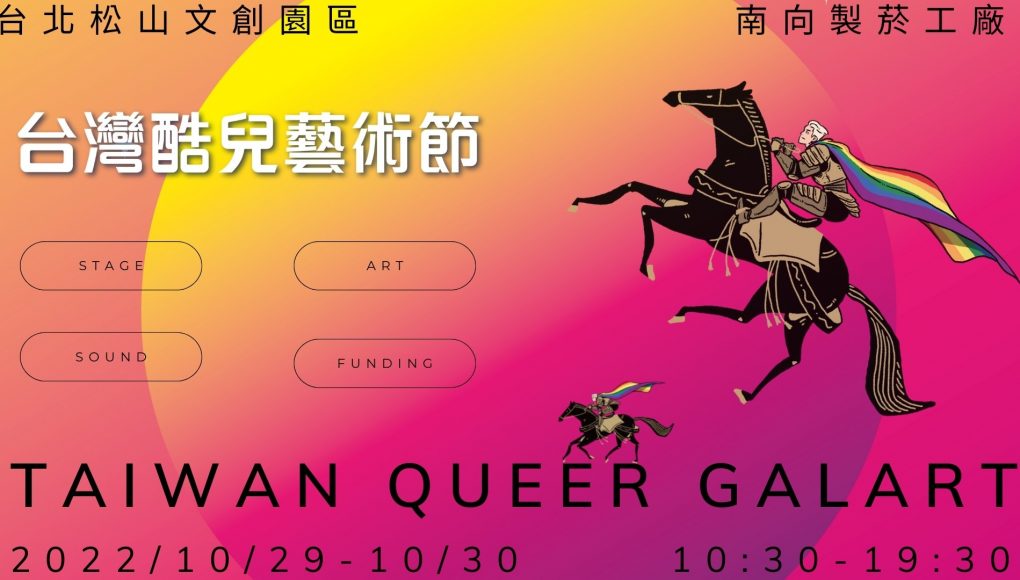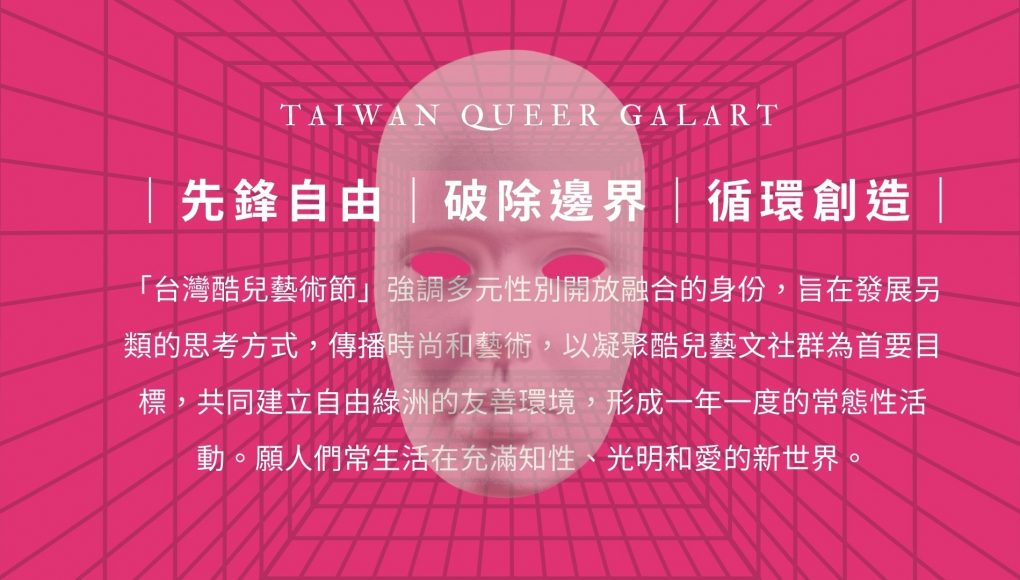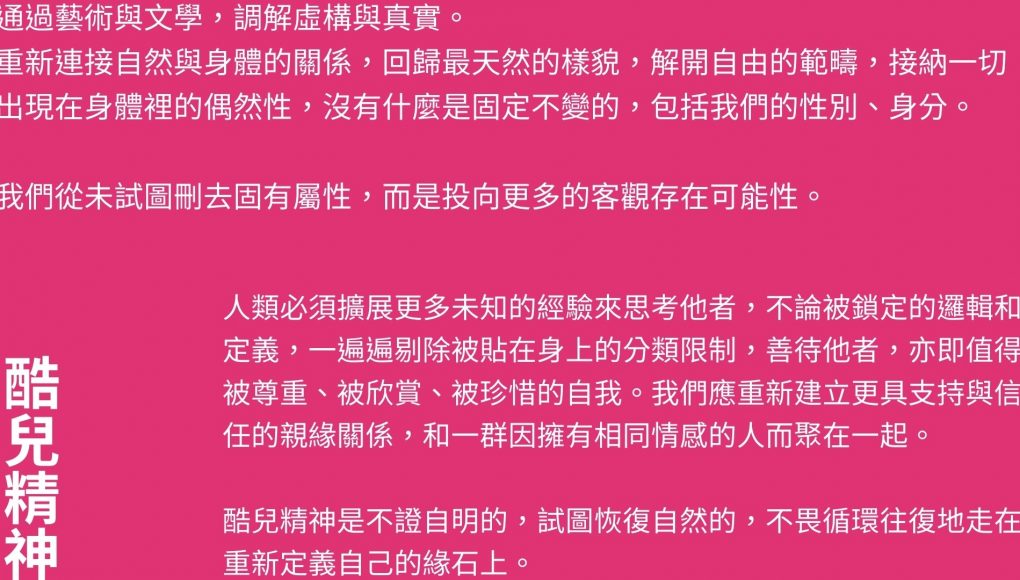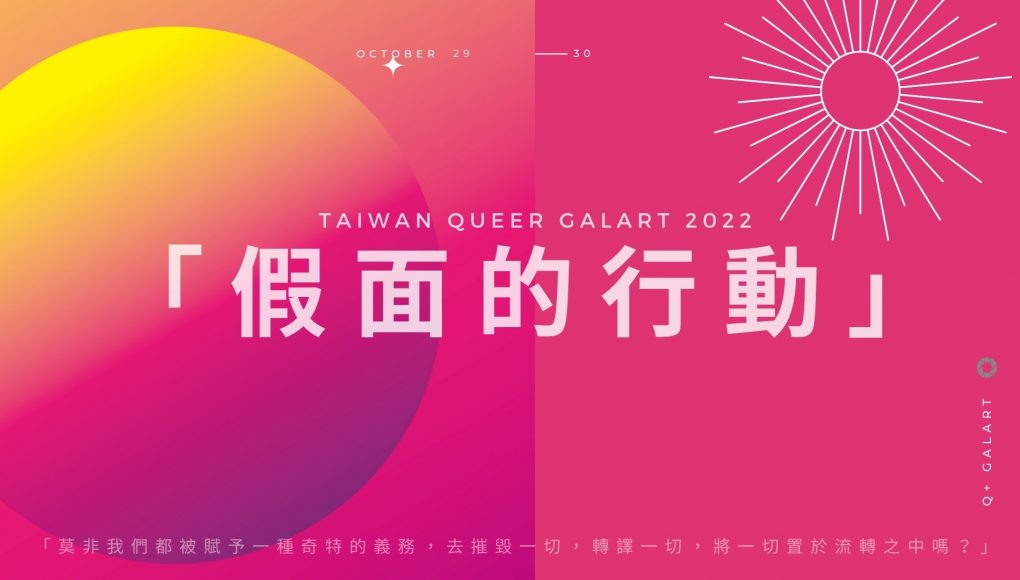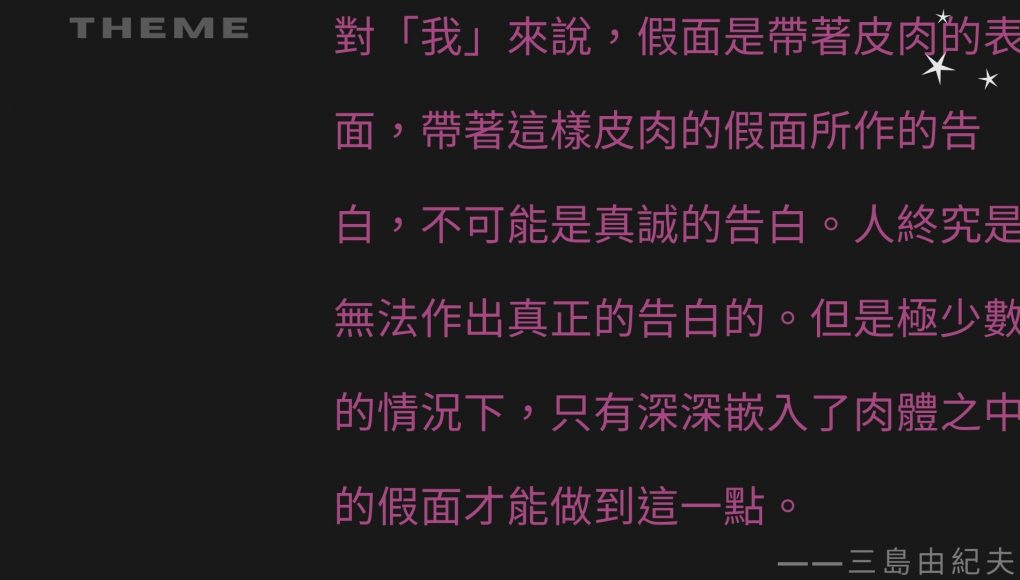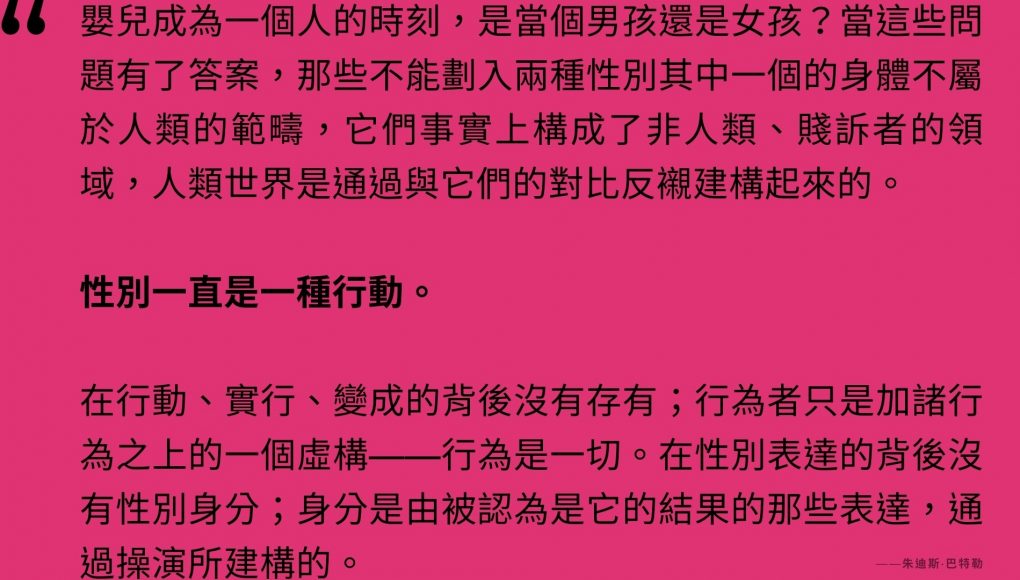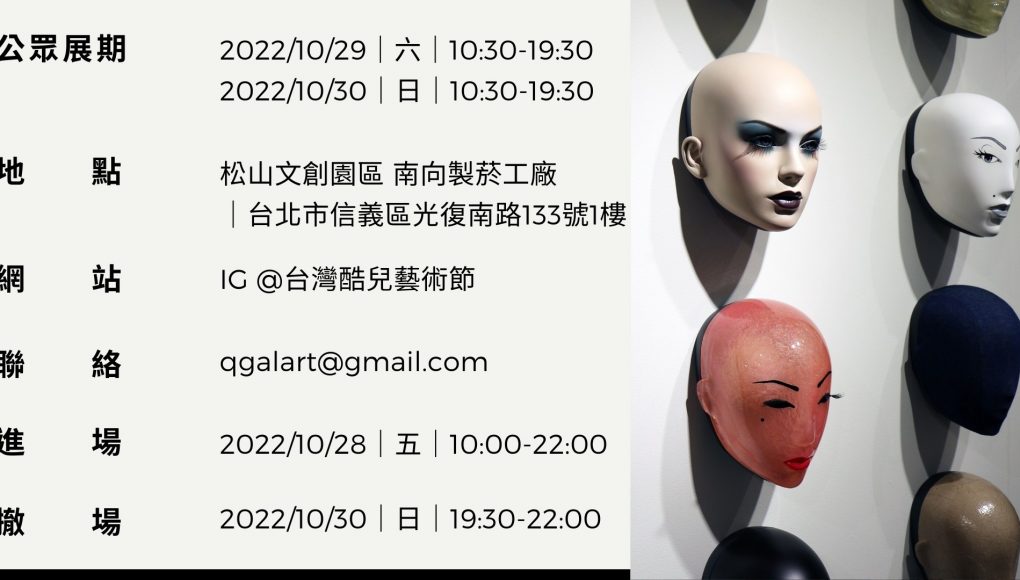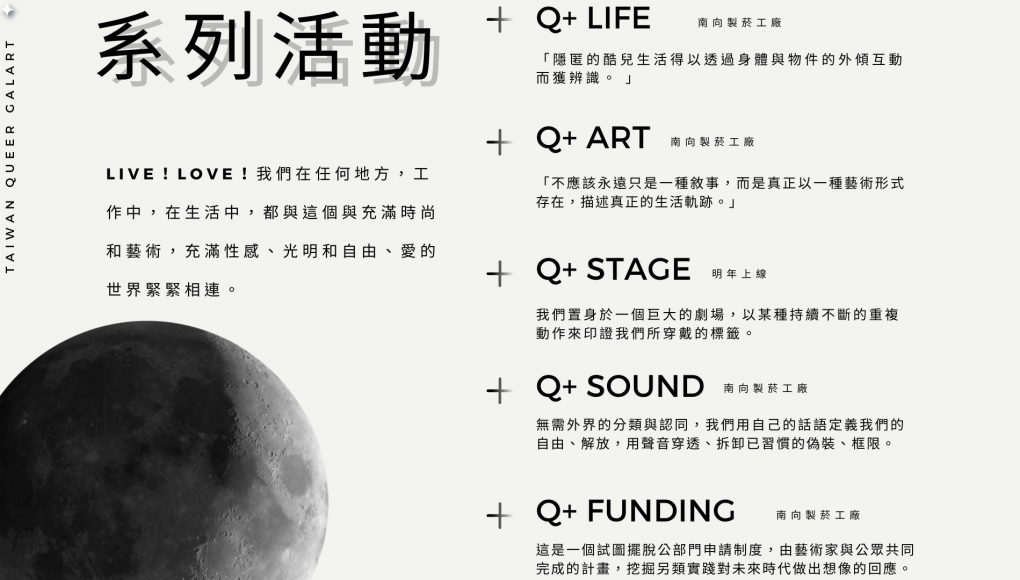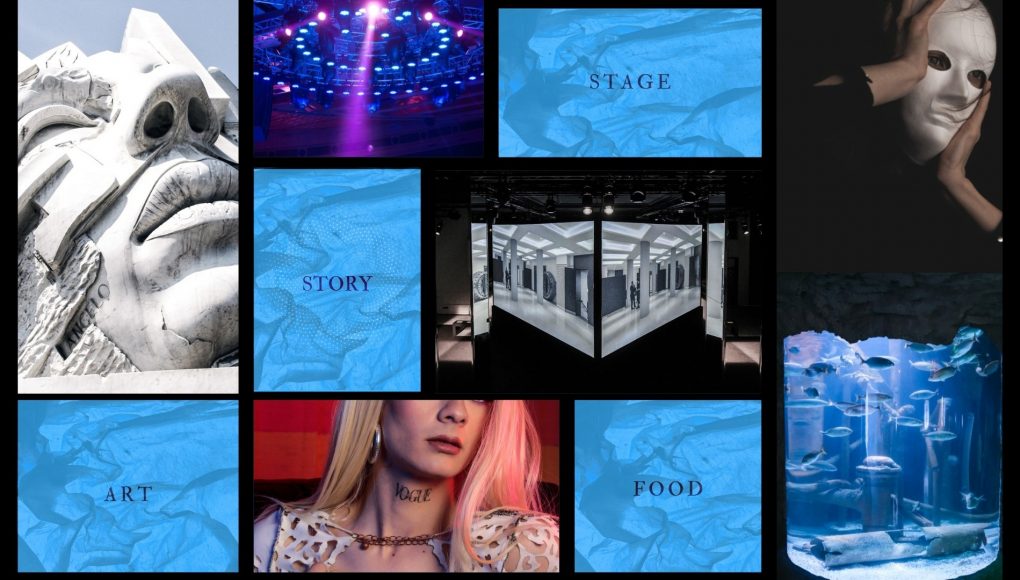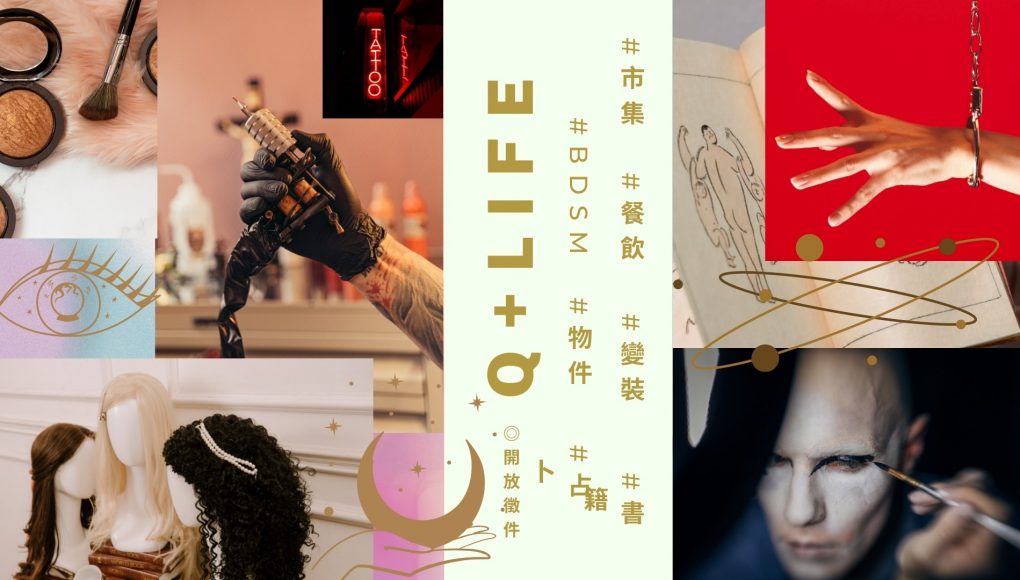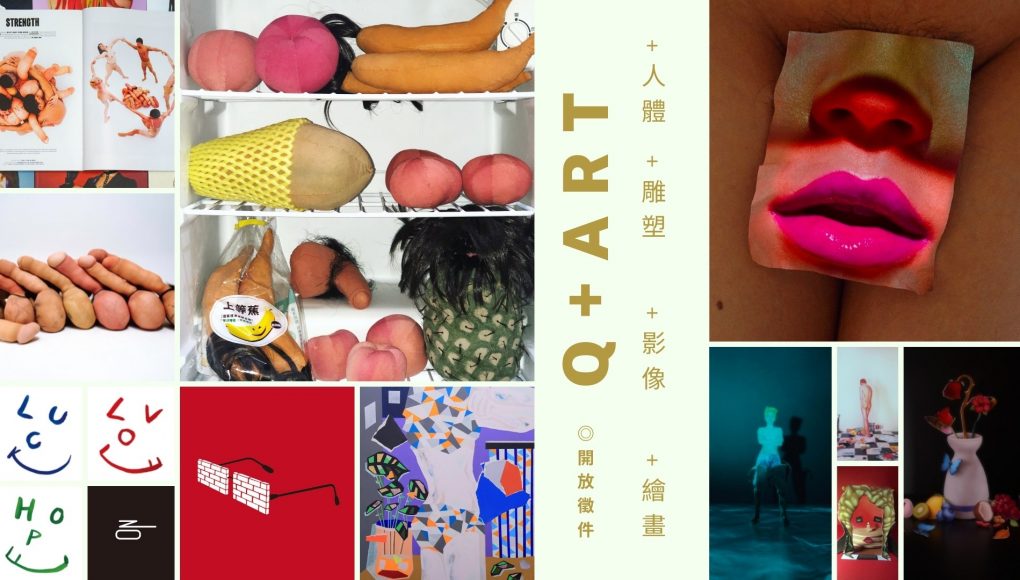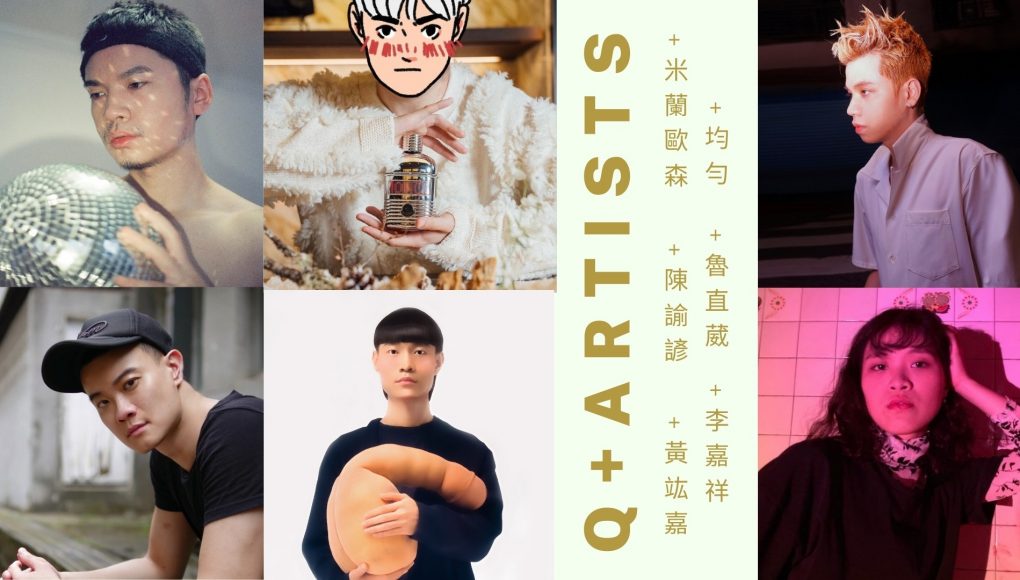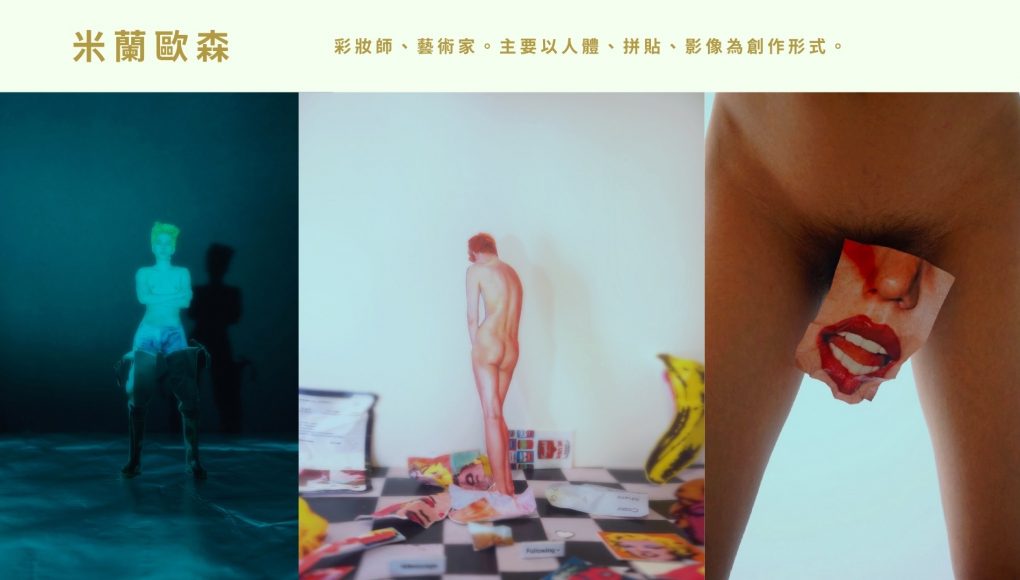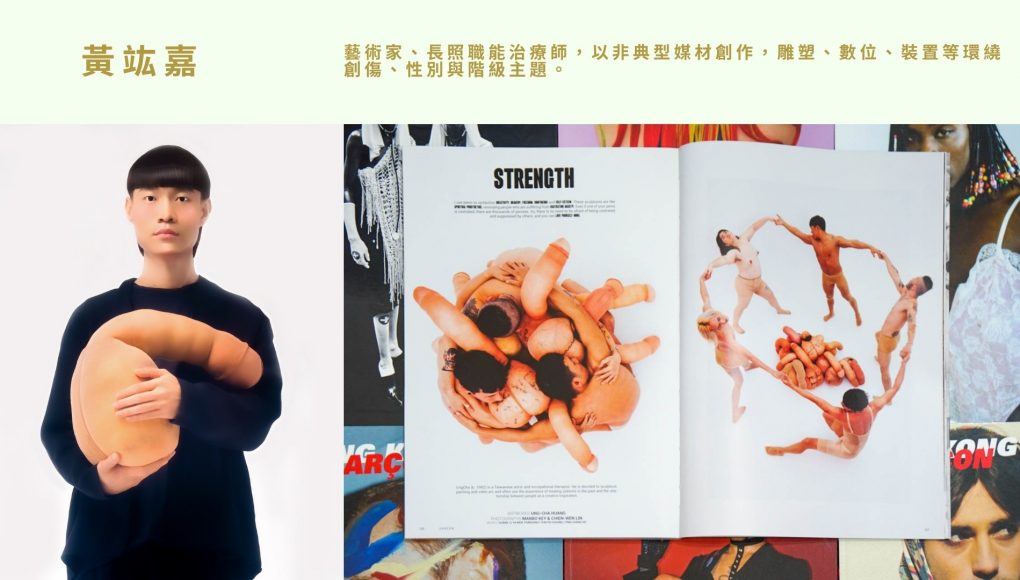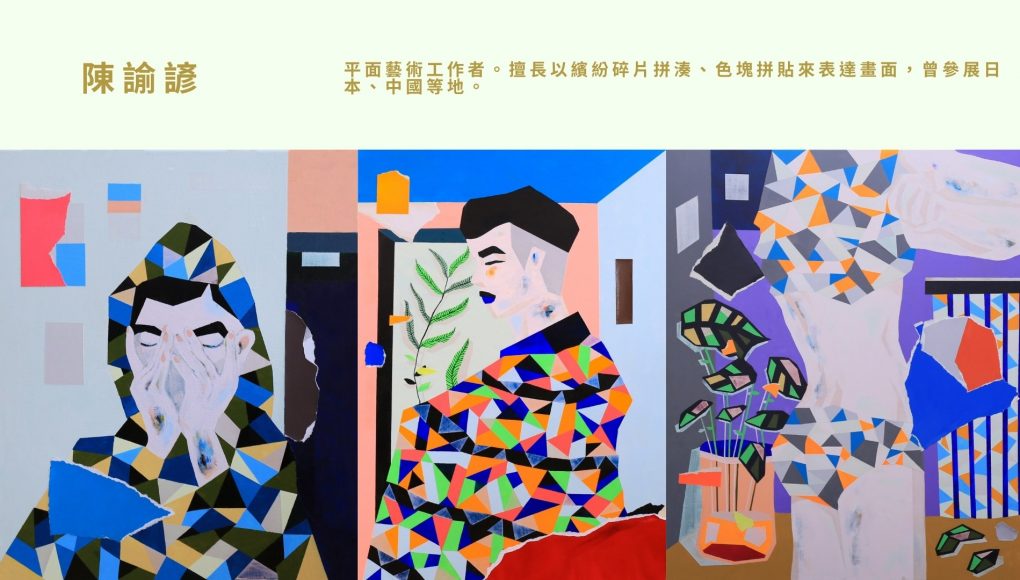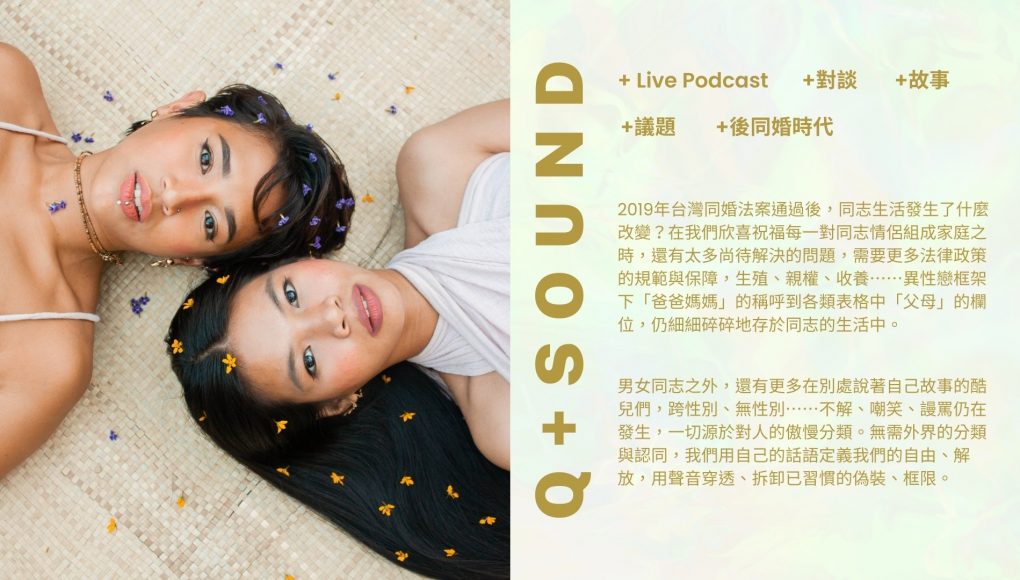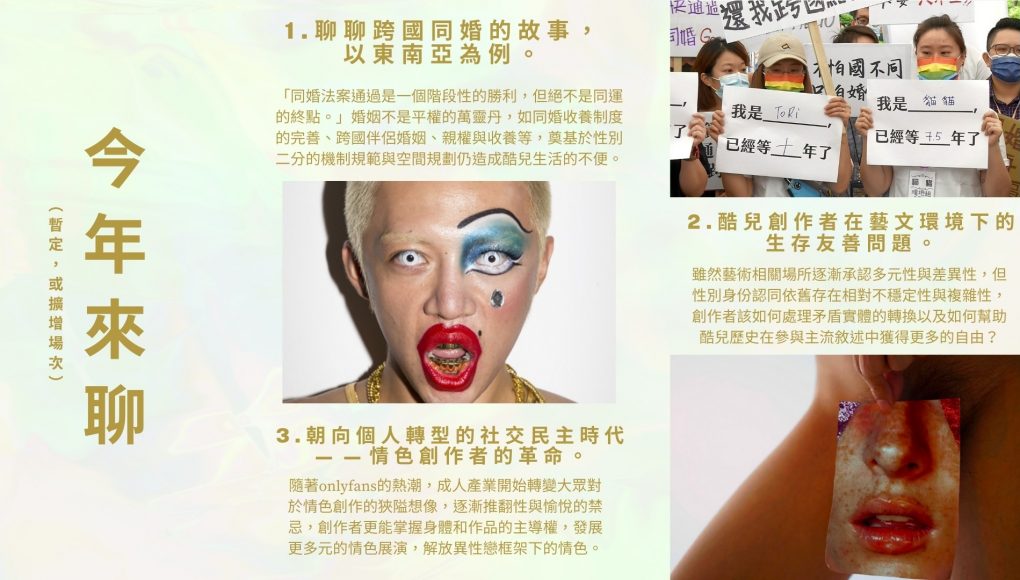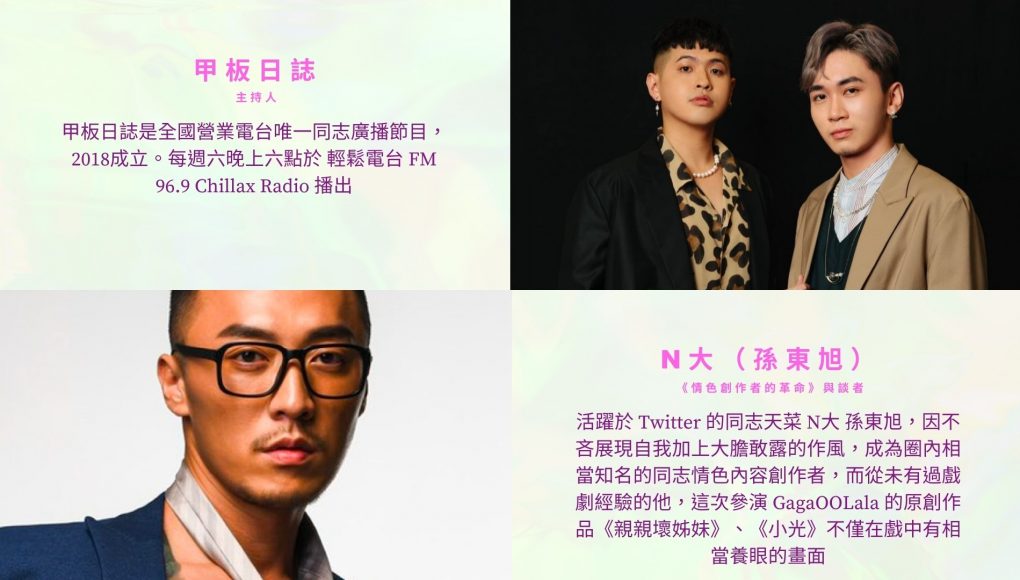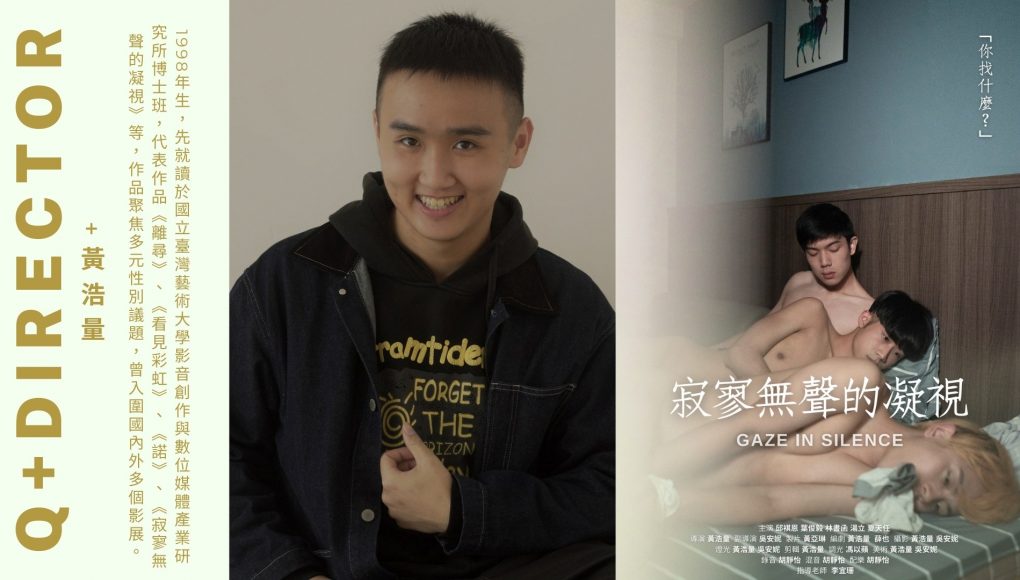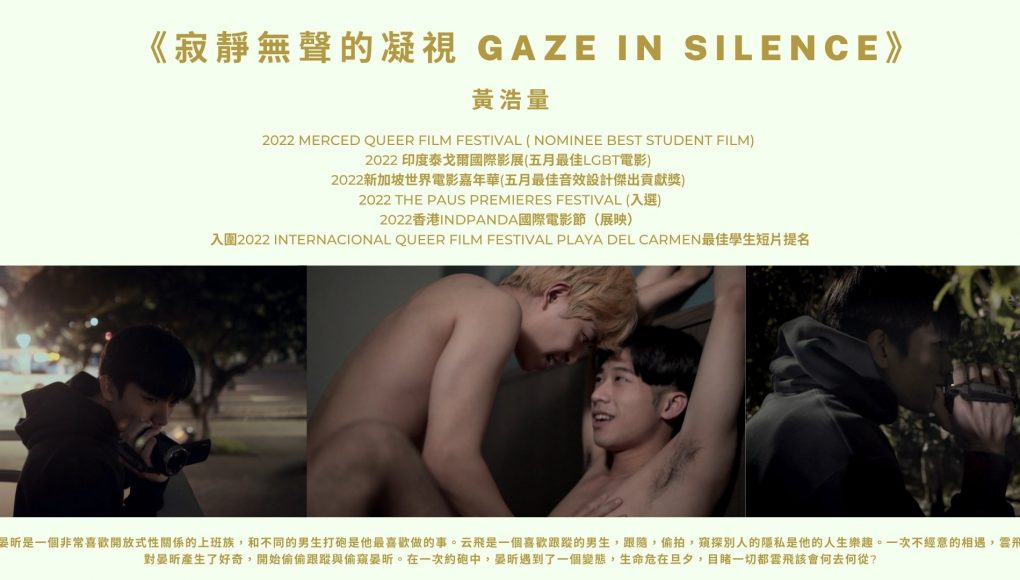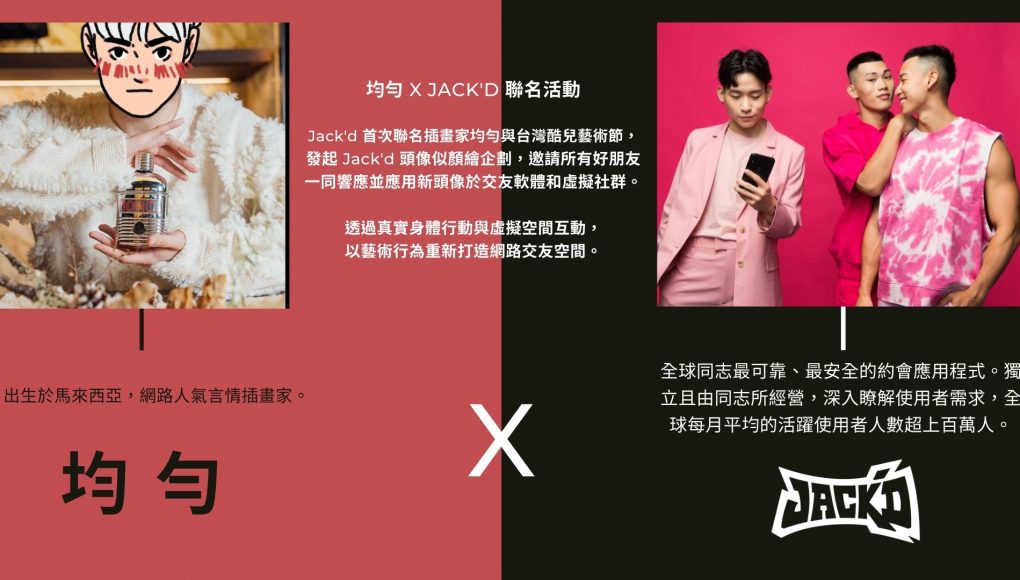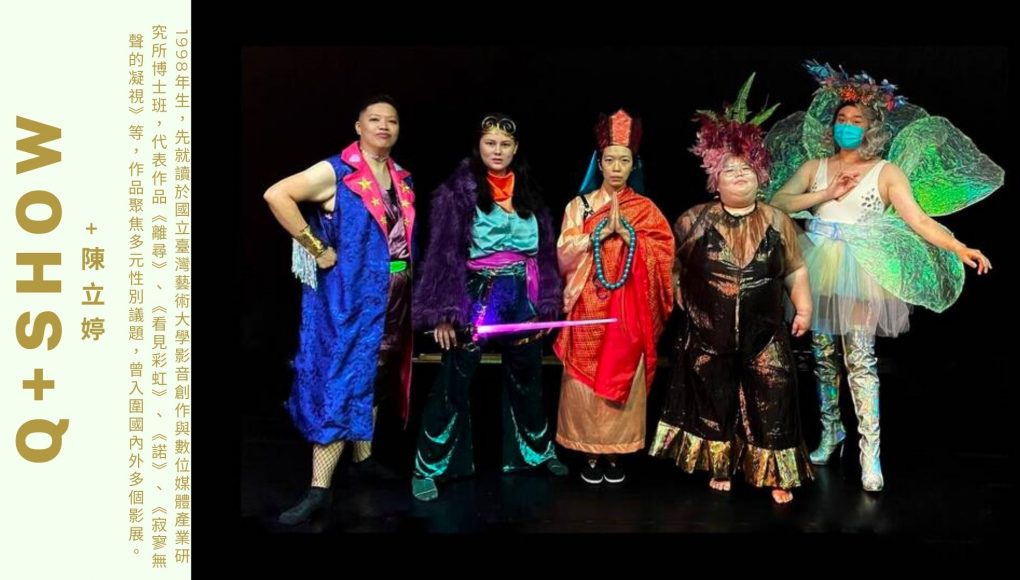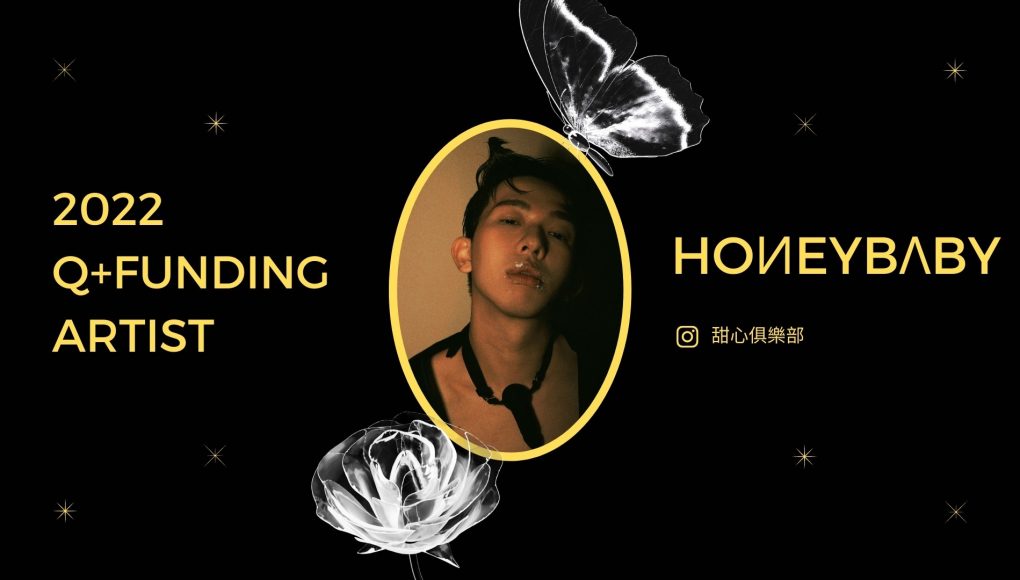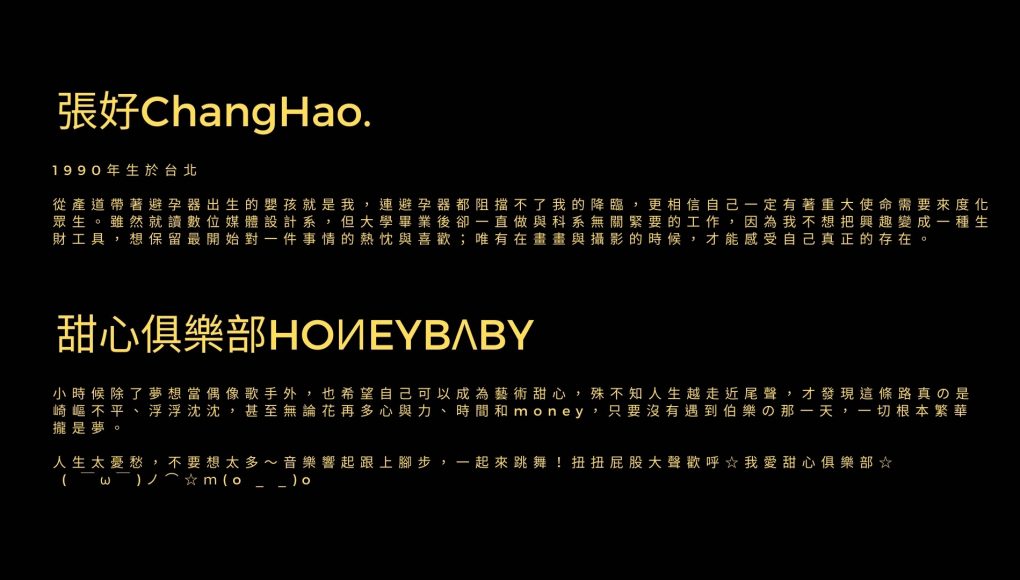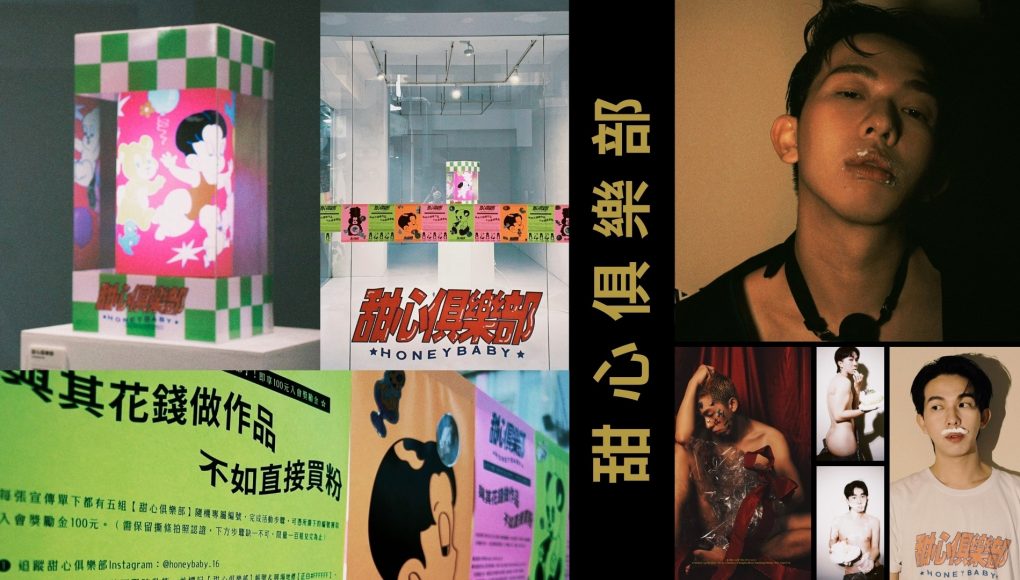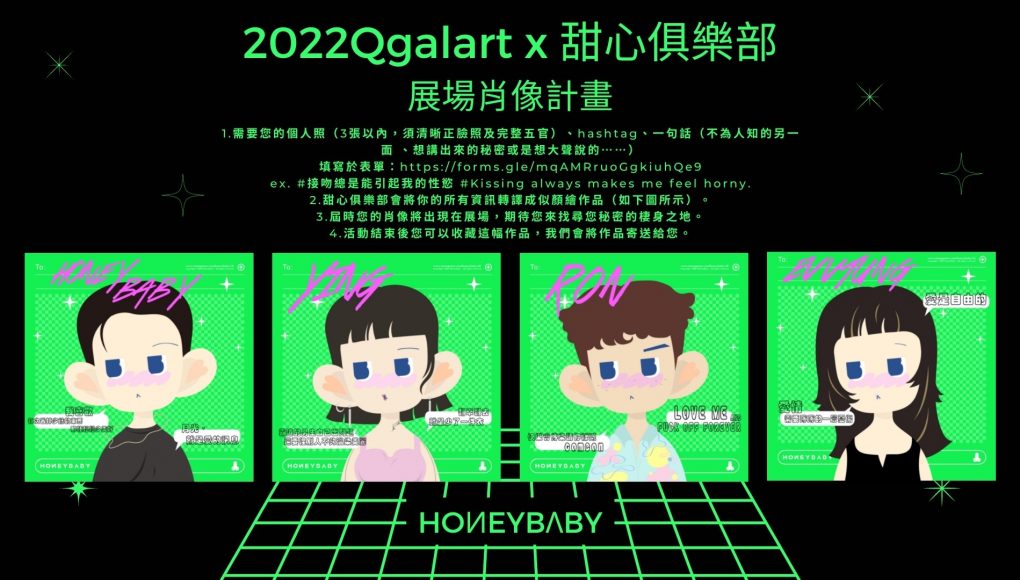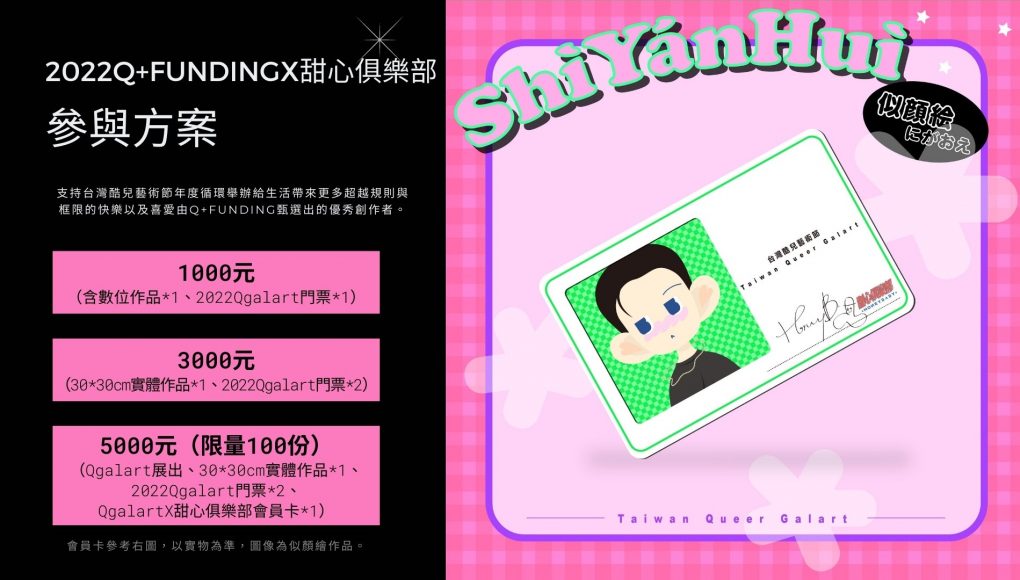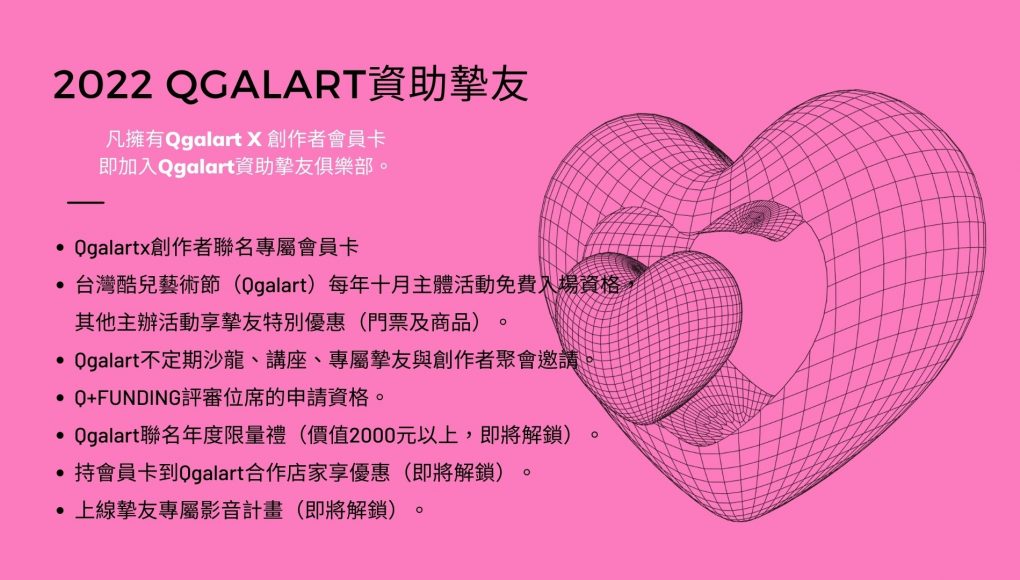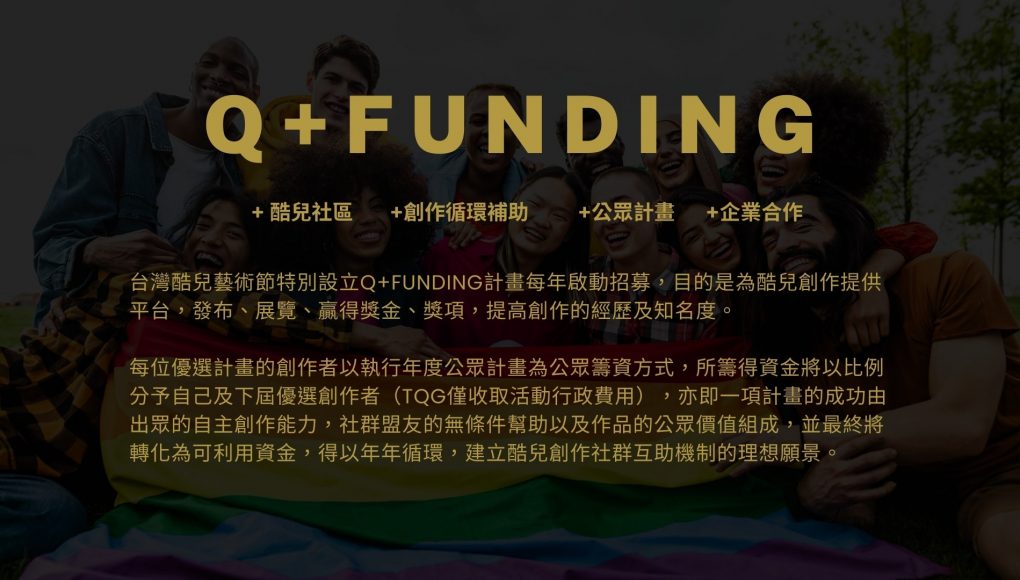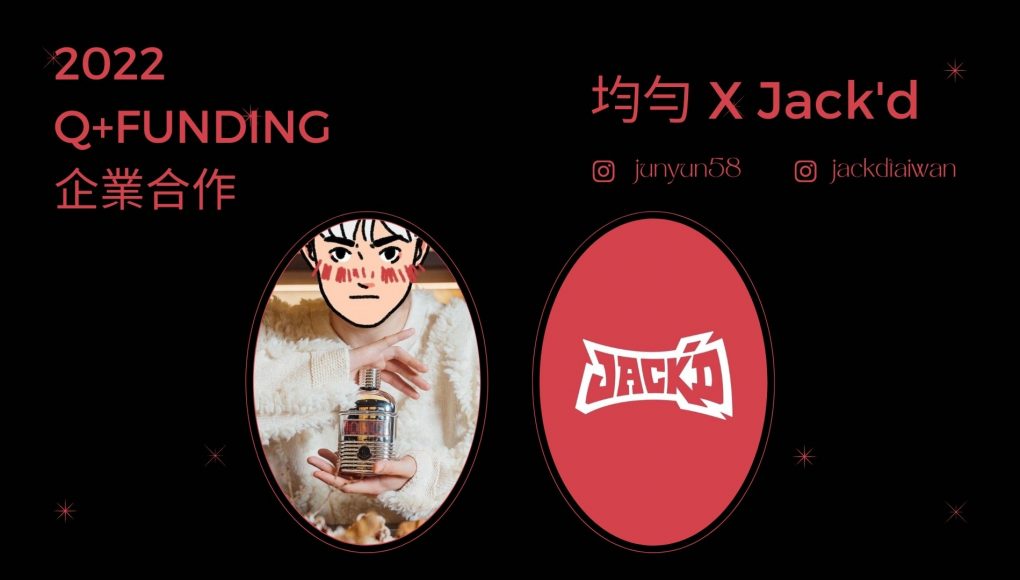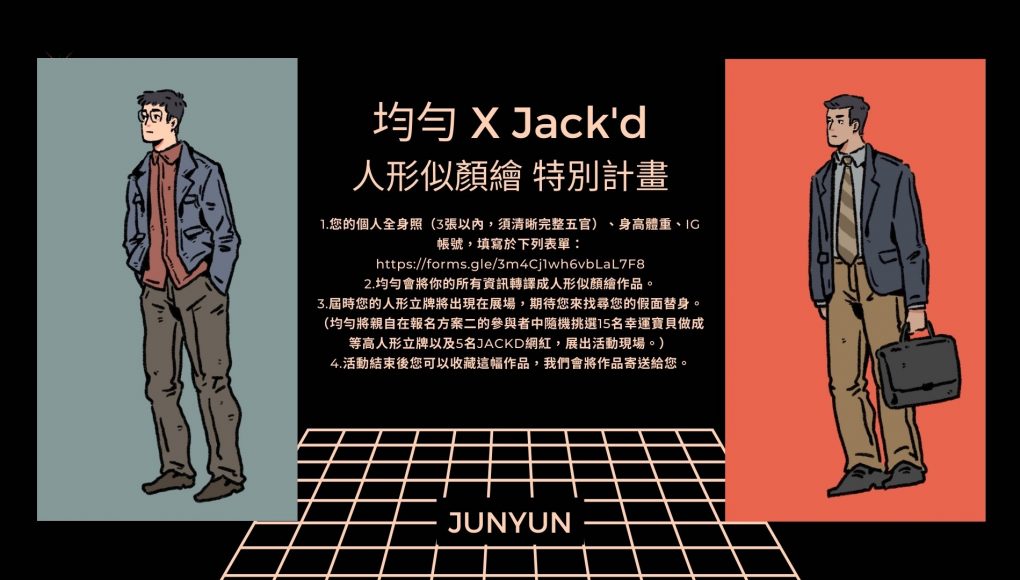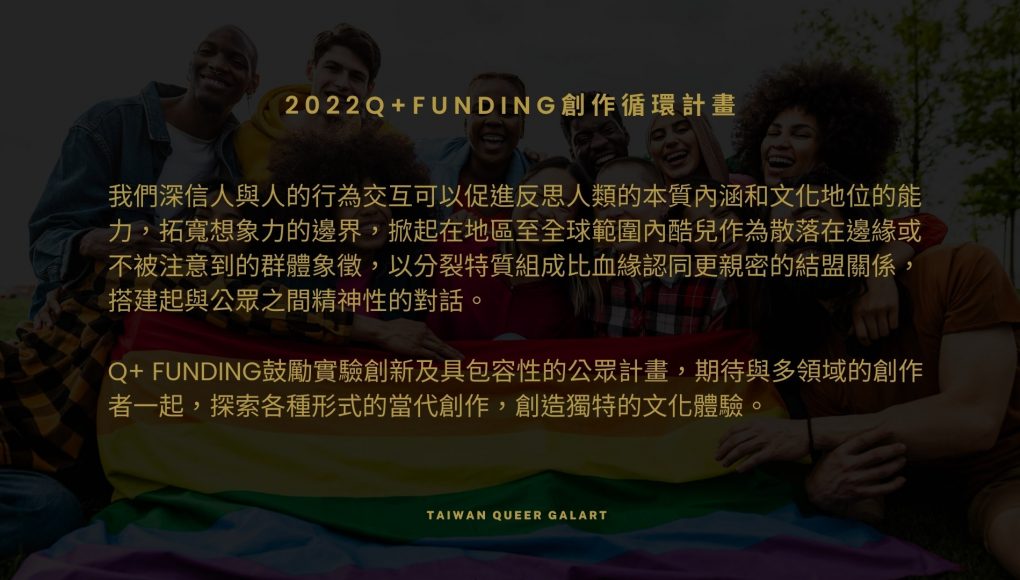2022 台灣酷兒藝術節 Taiwan Queer Galart – 假面的行動
對「我」來說,假面是帶著皮肉的表面,帶著這樣皮肉的假面所作的告白,不可能是真誠的告白。人終究是無法作出真正的告白的。但是極少數的情況下,只有深深嵌入了肉體之中的假面才能做到這一點。——三島由紀夫
嬰兒成為一個人的時刻,是當個男孩還是女孩?當這些問題有了答案,那些不能劃入兩種性別其中一個的身體不屬於人類的範疇,它們事實上構成了非人類、賤訴者的領域,人類世界是通過與它們的對比反襯建構起來的。
性別一直是一種行動。在行動、實行、變成的背後沒有存有;行為者只是加諸行為之上的一個虛構——行為是一切。在性別表達的背後沒有性別身分;身分是由被認為是它的結果的那些表達,通過操演所建構的。「莫非我們都被賦予一種奇特的義務,去摧毀一切,轉譯一切,將一切置於流轉之中嗎?」
活動時間|2022.10.29(Sat.) – 10.30(Sun.) 10:30-19:30
活動地點|松山文創園區 南向製菸工廠(台北市信義區光復南路133號)
主辦單位|自由人藝術公寓
策展團隊|顔寧志, 陳頌榮, 黃蒞姍
合作單位|GagaOOLala, JACK’D, 實踐大學媒體傳達設計學系
「台灣酷兒藝術節」強調多元性別開放融合的身份,旨在發展另類的思考方式,傳播充滿時尚和藝術,以凝聚酷兒藝文社群為首要目標,共同建立自由綠洲的友善環境,形成一年一度的常態性活動。願人們常生活在充滿藝文、知性、光明和愛的生活世界。
通過藝術,調解虛構與真實。重新連接自然與身體的關係,回歸最天然的樣貌,解開自由的範疇,接納一切出現在身體裡的偶然性,沒有什麼是固定不變的,包括我們的性別、身分。我們從未試圖刪去固有屬性,而是投向更多的客觀存在可能性。
人類必須擴展更多未知的經驗來思考他者,不論被鎖定的邏輯和定義,一遍遍剔除被貼在身上的分類限制,善待他者,亦即值得被尊重、被欣賞、被珍惜的自我。我們應重新建立更具支持與信任的親緣關係,和一群因擁有相同情感的人而聚在一起。
酷兒精神是不證自明的,試圖恢復自然的,不畏循環往復地走在重新定義自己的緣石上。
The ” Taiwan Queer Galart ” emphasizes the identity of diversity and gender openness and integration. It aims to develop alternative ways of thinking, spread fashion and art, with the primary goal of uniting the queer art and literature community, and jointly build a friendly environment of freedom oasis, forming An annual regular event. May people always live in a life world full of art, intelligence, light and love.
Through art, mediation between fiction and reality. Reconnecting the relationship between nature and the body, returning to the most natural appearance, unraveling the scope of freedom, and accepting all the contingency that appears in the body, nothing is fixed, including our gender and identity. We never try to delete the inherent properties, but instead invest in more objective possibilities.
Humans must expand more unknown experiences to think about others, regardless of the locked logic and definition, remove the classification restrictions attached to the body over and over again, and treat others kindly, that is, the self that is worthy of respect, appreciation, and cherishment. We should re-establish a more supportive and trusting kinship with a group of people who share the same emotions.
The queer spirit is self-evident, trying to restore the natural, defying the cycle of walking on the edge of redefining itself.
酷兒是什麼? What is Queer?
最初的意思是「奇怪、奇特、另類的」,是對既非異性戀也非順性別的人的特殊說法,在19世紀後期,酷兒最開始被用做負面來貶低那些有同性慾望或關係的人。
從 1980 年代後期開始,酷兒文化理論研究開始成形,並重新使用這個詞。酷兒一詞作為LGBTQ+社群趨近更加標籤化、同質化的分類下,有更多的包容性與流動性 。
在21世紀,酷兒越來越多地用於描述廣泛的非規範性、流動性的性別、性向、性取向以及政治或身份的認同。
Originally meaning is “weird, odd, alternative” and was a special term for someone who was neither straight nor cisgender, in the late 19th century, queer was first used as a negative to demean those with same-sex desires or relationships people.
Beginning in the late 1980s, queer cultural theory studies began to take shape and re-use the term. As the LGBTQ+ community tends to be more labelled and homogenized, the term queer is more inclusive and fluid.
In the 21st century, queerness is increasingly used to describe a wide range of non-normative, fluid genders, sexual orientations, sexual orientations, and political or identity identities.
酷兒理論 Queer Theory
酷兒理論和酷兒研究等學術領域普遍反對性別二元論、性別、性取向標籤同質化。酷兒理論對這種性別刻板印象進行了批判性結構,將生理性別(sex)與社會性別(gender)區分。酷兒理論認為性別認同和性取向不是「天然」的,而是通過社會和文化過程形成的。
酷兒理論使用解構主義、後結構主義、話語分析和性別研究等手段來分析和解構性別認同、權力形式和常規。酷兒理論不僅解構社會性別,而且還分析文化的各個方面,但是在這個過程中總是聯繫到性別和性別角色,尤其是批評其中的壓迫成分。在這個過程中酷兒這個概念不斷被重新定義,來擴展它的含義,擴大它包含的人群。酷兒藝術、酷兒文化團體和酷兒政治團體是酷兒身份現代表達的例子。
Academic fields such as queer theory and queer studies generally reject gender binaryism and homogenization of gender and sexuality labels. Queer theory critically structures this gender stereotype, distinguishing between sex and gender. Queer theory argues that gender identity and sexual orientation are not “natural” but are formed through social and cultural processes.
Queer theory uses methods such as deconstructivism, poststructuralism, discourse analysis, and gender studies to analyze and deconstruct gender identities, forms of power, and conventions. Queer theory not only deconstructs gender, but also analyzes aspects of culture, but in the process always links gender and gender roles, and especially criticizes the oppressive component within it. In the process, the concept of queer has been constantly redefined, to expand its meaning and to expand the people it includes. Queer art, queer cultural groups, and queer political groups are examples of modern expressions of queer identity.
酷兒在台灣 Queer in Taiwan
臺灣自1994年《島嶼邊緣》引入「酷兒」一詞以來,「queer」的詛咒色彩並沒有在『酷兒』上頭充份還魂。酷兒是混血之後的新品種,一方面要和「queer」交叉對話並持續接受外來刺激,而另一方面也要書寫在地的歷史」(紀大偉);在台灣,「酷兒」和「同志」也不似西方的壁壘分明,兩者毋寧是互相支援的關係。有些人身為同志,也同時是個酷兒。
性平與人權 +
許多同志人權議題仍缺乏法律政策的規範與保障,如同性伴侶的法律地位、親權與收養等;以及社會僵化的印象,奠基於性別二分的機制規範與空間規劃造成許多酷兒生活的不便。
後同婚時代+
「同婚法案通過是一個階段性的勝利,但絕不是同運的終點。」婚姻不是平權的萬靈丹,如同婚收養制度的完善、跨國伴侶婚姻,還有關於同婚對異性戀的衝擊等等的討論。
與公眾對話+
目前台灣的酷兒/同志組織多數仍然是分散而孤立地工作,極少與民間組織、學術機構、政府或私營部門建立合作關係,我們是否需要更多新的渠道和能量轉化大眾對酷兒的認知與實踐,持續「現身」與公眾展開更直面的對話。
酷兒藝術在台灣 Queer Art in Taiwan
「只有寬容才能聚生多元文化,激發創意。」「在如今自由主義話語的體系中,酷兒們成為了社會進步與創新能力的表徵。」
異性戀制度下的觀看限制+
藝術品對於觀眾年齡的限制以及種族與民族認同等問題,LGBTQ+群體的慾望、身體、身份的敘述與理解仍受到異性戀邏輯的約束,其可見度仍然處於社會的邊緣狀態。
酷兒創作者的困境+
藝術相關場所逐漸承認多元性與差異性,但性別身份認同依舊存在其所闡述的語境內存在相對不穩定性與複雜性,「可能最複雜的問題源於某種內在矛盾,這一矛盾正是酷兒解放運動及其遺存中的核心問題——一種既根除歧視又尊重差異的渴望。」
社群從被動到主動+
觀眾需要在社會環境下的「被動接受」與身處藝術環境下的「主動抗爭」的兩種截然不同意識形態對自我產生質疑與分析,在這樣的背景下,藝文活動者該如何處理這樣的一個矛盾實體的轉換以及如何幫助「酷兒」歷史在參與主流敘述中獲得更多的自由?
